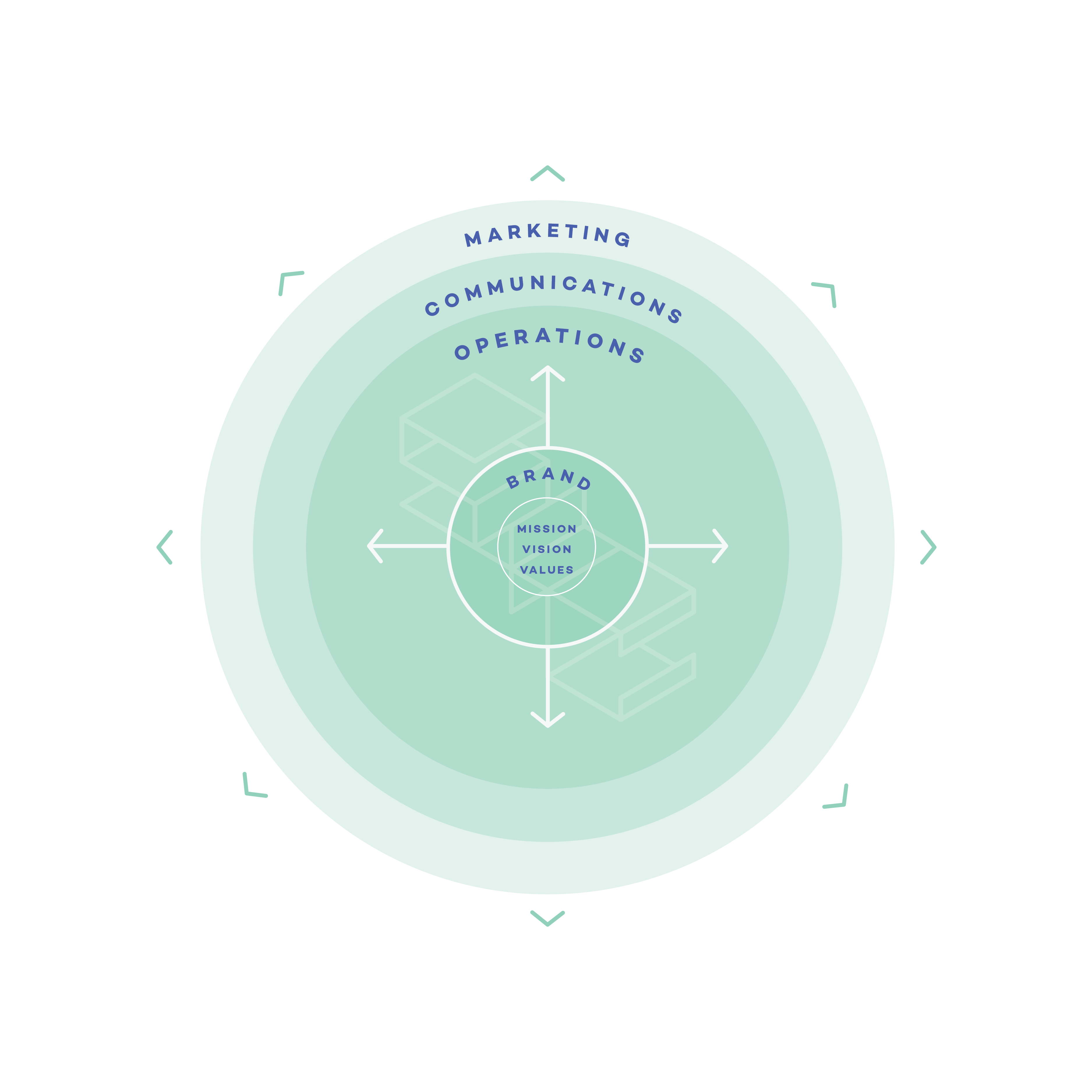Three Reasons Why Brand Matters for Nonprofits (and What to Do About It)
This guest post was written by Talie Smith, who is Co-Founder, Creative Director at Smith + Connors, and Design Equity Advisor for Visible Alliance. She is a creative strategist who helps organizations own their true voice through branding and a methodology called Design Therapy.
Many nonprofit teams and leaders struggle with recognizing the value of investing in their organization’s brand. A strong brand can greatly advance an organization’s mission and business goals. In fact, organizations that prioritize and integrate communications into core operations have a distinct advantage. How you engage with your audiences — both internally and externally — is just as critical as what you do for them.
Background: What is Brand?
Let’s define our terms, first. A brand is a complex mix of thoughts, feelings, and impressions people have about your organization based on their interactions with it. Brand is conveyed through the voice, visual identity, messaging, thought leadership, and story of your organization.
When building a strategic brand, you are defining or stating:
- Core messaging (mission, vision, values).
- Your business goals (strategic plan/priorities, growth goals).
- Your organization's roles and personality (brand drivers).
- Your position in the landscape (what makes you unique and what space can you own).
- What messages you should use, written for each audience type.
- A visual system that conveys all of the above.
You can leave it up to your audiences to form their own ideas about your brand based on interactions with your organization; or you can proactively control what your brand says about you. As we like to say, “If you don’t create your brand, your audiences will create it for you.”

Reason 1: You Need to Tell the World Why You Are Special
Having a mission statement and a strategic plan is great. You need a theory of change to achieve your mission. However, there are likely many others working toward a similar mission. It is critical to convince partners, donors, staff, and volunteers to work with you, which means you need to articulate clearly what makes your organization and your approach better, different, and special.
A common challenge is that people in the organization describe the purpose and role of the organization differently. There is often a fractured message that dilutes efforts and confuses audiences. A good brand defines clearly who you’re talking to, what matters to them, and how to get (and keep) their attention. And when internal leaders are consistent in their message and story, this powerful alignment projects outward and builds credibility.
Reason 2: Brand Affects Your Bottom Line
Nonprofits are entities with bottom lines that need funders and donors to help them work toward their mission. Competition among nonprofits for dollars and attention is real.
The more clear brand is, the easier it is to communicate. For nonprofits with limited resources, this clarity creates immense efficiency by streamlining communications efforts and keeping messaging succinct and consistent.
A clear brand:
- Saves the organization time figuring out how to tell your story (removing the trial and error approach);
- Presents audiences with a clear, succinct, consistent narrative that builds credibility with audiences.
- Allows staff to focus on making meaningful connections with the right people faster and more frequently.
- Builds trust: When your audience feels seen and understood through your brand they will naturally want to engage with you.
Strategic branding is a capital investment for your organization: it takes time and resources to get it right; but once set, it is a solid foundation for your communications and marketing that will pay dividends in the long term.
Reason 3: Brand Makes Many Decisions Easier
Strategic communications work is mission work, and brand makes that work much easier. You must always find new ways of sending messages and engaging your audiences. A solid brand gives you a rich and consistent well of ideas to continually draw from, under any circumstances, across every channel.
You send out newsletters, write to donors, and publish blog posts. A clear messaging strategy based on your brand allows you to ideate faster and know exactly what you want to say. Your leadership speaks in various venues, and everything must relate back to the mission. Knowing the parameters lets you focus on being effective in the moment.
So, What’s the First Step?
First and foremost, LISTEN. Talk to your stakeholders to find out what they really think of you and what they’re looking for. You should talk to your staff about what they think is the foundation of your identity and what makes you special. Read between the lines: What do people really want? What fears and concerns do you address in your work? Then you can start to document what you want to say and how you should look to get your messages out.
You can do some of the work yourself, but it can be really helpful to get an outside perspective. Any organization can become an echo chamber. A brand consultant can come in as an impartial facilitator to gather the information and develop clarifying insights. We’ve heard many times from clients that our perspectives and insights, based on data, gave their organization’s messaging a greater power to resonate with their public — and that's really the whole point of developing a brand.
Want help bringing your brand to life in Marketing Cloud Account Engagement (powered by Pardot)? Consider working with a consultant.
















